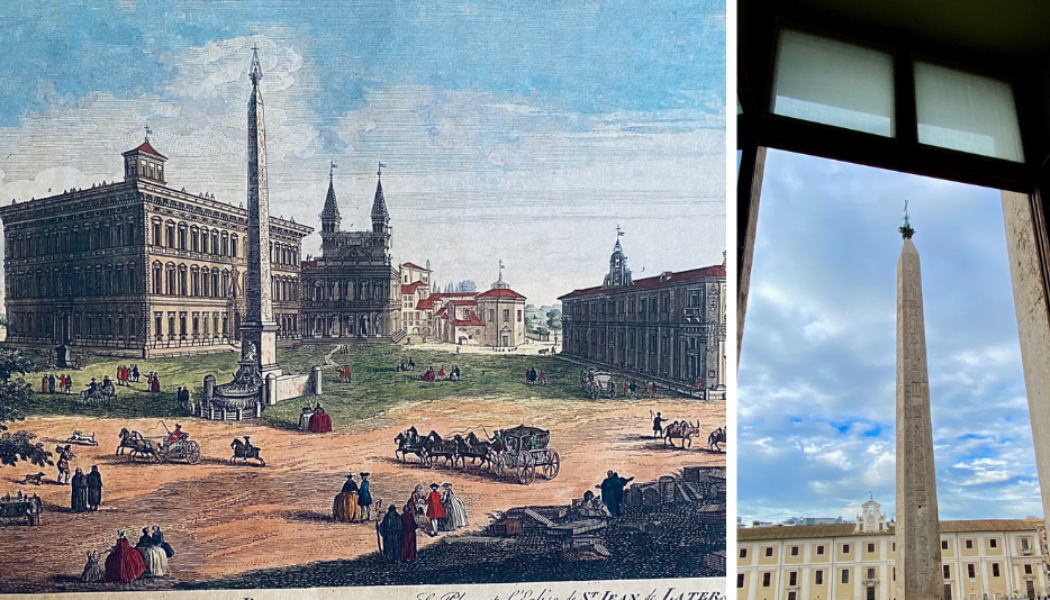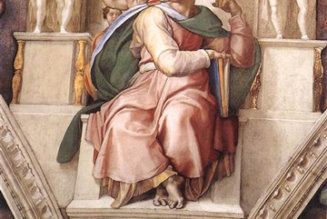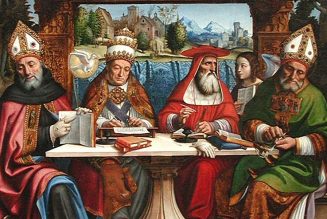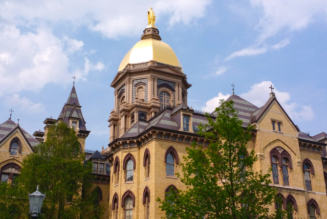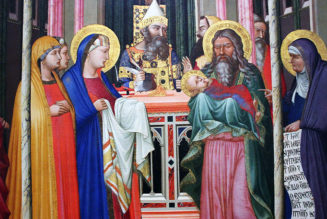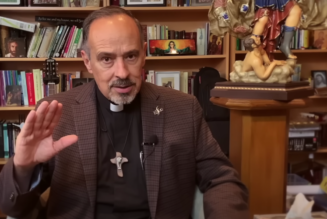ROME — Starting Dec. 13, pilgrims as well as art and history lovers are now able to access the Lateran Palace, a high place of the history of Christianity in Rome.
Adjacent to the Archbasilica of St. John Lateran, the Cathedral Church of Rome and the seat of the pope as the bishop of Rome, the palace served as the residence of popes for almost a millennium, until the residence was transferred to the Vatican in the 14th century, after the Avignon Papacy.
The Lateran hosted no less than five general Councils, as well as various synods. There, Pope Boniface VIII announced the first Jubilee of the Christian history. It is also there that the Lateran Treaty, by which the Kingdom of Italy recognized papal sovereignty over the Vatican City, was signed, in 1929.

The tour itinerary of the site — also known as the “House” of the Bishop of Rome — extends over 3 thousand square meters on the first floor of the apostolic palace, whose entrance is in Piazza di Porta San Giovanni, next to the cathedral, and includes ten rooms, the papal apartment, the private chapel and the monumental staircase that leads directly to the Basilica.
Access to the building will be granted to groups of a maximum 30 people, guided by the Missionaries of the Divine Revelation, who have become privileged guides for pilgrims in the Italian capital over the past years, especially through their “Catechesis with Art” sessions.
According to the community’s Mother Superior Rebecca Nazzaro, the tour itinerary is intended to make visitors “rediscover the thread of Providence that has guided the Church over the centuries, especially in Rome, that was first the heart of the Roman Empire and then the heart of Christianity,” she said during a Dec. 7 press conference at the Palace.
On this occasion, Cardinal Angelo De Donatis, the vicar general for the Diocese of Rome, stated that this initiative to turn these historic walls into a museum, carried out by the Diocese of Rome, responds to Pope Francis’s will to enhance the cultural heritage entrusted to his protection, as he wrote in a letter sent to the cardinal last February.
This wish echoed the Pope’s previous decision to turn the Pontifical Villas of Castel Gandolfo, the historic secondary residence of pontiffs, into a museum in 2015.
Allegory of the Church as a Human and Divine Institution
Lined with precious tapestries, frescoed ceilings, works of art and antique furniture, the set-up of the rooms for the visit follows a precise theological approach — namely, that the Church Institution is both divine and human, and that it guides the family of God’s people through the centuries, as Divine Revelation Sister Agnese Scavetta told the Register during the Dec. 7 press preview. Sister Agnese, one of the emblematic figures of “Catechesis With Art,” highlighted that it is indeed no accident if the itinerary starts with the Hall of Pontiffs, where the Lateran Treaty was signed.
“It is the most important room of all, and it represents the Church in its being in the world but not belonging to the world, that meets and must dialogue with the powers of the world, represented by the Hall of Emperors [the second room], who in turn must pay homage to the Church, recognizing its role of guidance and legitimization of power,” she said.
Then come the halls of the prophets and kings: Samuel, the first prophet, king David of Israel, King Solomon, who built the Temple of Jerusalem, and the prophets Elijah and Daniel.
“The eighth hall is that of the “Four Seasons,” to emphasize that the Church goes through the times, to arrive at the divine port that will be the recapitulation of all history in Christ. So, through the human seasons, history, the Church is a beacon of light,” sister Agnese continued.
The penultimate room is that of the Apostles, on whom the Church was founded, followed by that of Constantine, the Christian Roman Emperor who granted his people freedom of worship. The visit concludes with an access to the popes’ private apartment, made up of a dining room, a bedroom, library and antechamber, which shine by their sobriety.
“It is interesting to notice the contrast between the great sumptuousness in the reception rooms and the private apartment, that is a place where popes have contact with the Lord in their intimate prayer,” she said, adding that the apartment’s private chapel was well beloved by Pope John XXIII who even wanted to be buried there.
The Place That Unties Knots
The Lateran Palace has a strong symbolic value in view of the historical episodes that took place there. It is the place where for the first time, Emperor Constantine gave the Christian community the possibility to exist fully in the face of the world, to publicly worship the Lord.
“That is why the Lateran is the first church built after the granting of the freedom of worship, and became the cathedral of the Pope. The pope takes possession of his cathedra there, and the ‘House of the Bishop of Rome’ served as a place of support, with representation halls,” Sister Agnese said.
But it is also there that the Roman Question — a dispute regarding the Pope’s temporal power, which that represented one of the most difficult episodes in the history of the modern Church — was solved, with the signing of the Lateran Treaty between Pope Pius XI (represented by Cardinal Secretary of State Pietro Gasparri) and King Victor Emmanuel II of Italy (represented by the then Italian Prime Minister Benito Mussolini).
The dispute, triggered in 1870 with the Capture of Rome — the final step of Italian unification — endured for about 60 years, during which Italian faithful were torn between their duty of obedience to the state on the one hand, and to the Church on the other.
“In its great wisdom, the Church made this legal instrument its own to allow a mutual recognition with the Italian state, and it gave the Pope the possibility to dialogue with other legal authorities worldwide. However, in order to obtain such recognition and sovereignty, Pius XI had to give up many territories, contenting himself with this small land of the Vatican, and a few other Roman buildings [including the papal basilicas St. John Lateran, St. Mary Major, and St. Paul Outside the Walls] to allow the Church to continue its universal mission,” Sister Agnese explained.
In her view, these are all major episodes in history that make the Lateran Palace an absolutely essential place in Christianity. This new mission entrusted to her community in the Palace adjoining the Archbasilica St. John Lateran, where they first started their Catechesis with Art programs many years ago, that place “where a world of beauty opened to them,” appears to her eyes as a caress of Providence.
Said Sister Agnese, “This great history opens us to the world and gives us the opportunity to let people see the beauty through which God makes himself present within his Church.”
Join Our Telegram Group : Salvation & Prosperity
